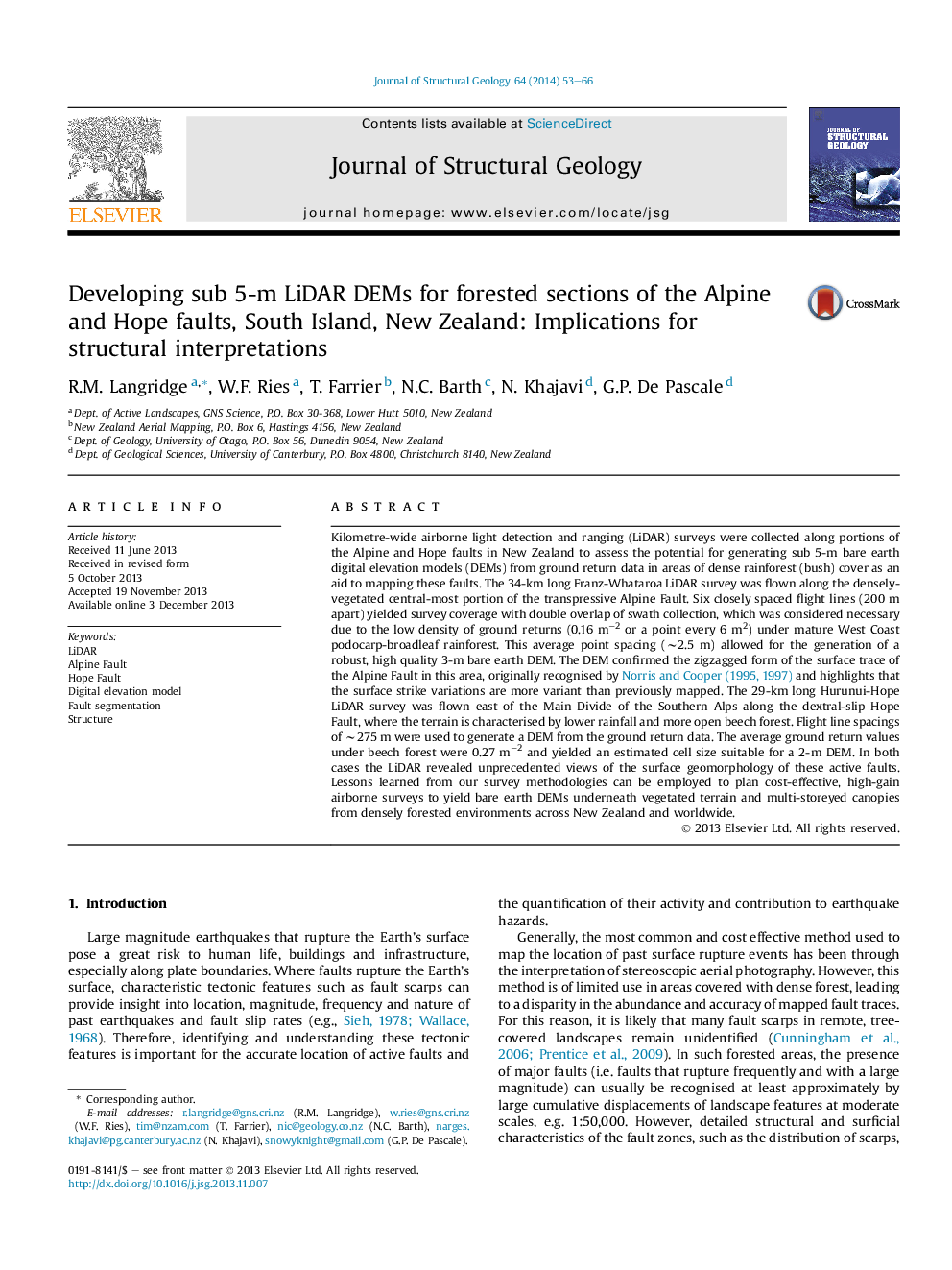| کد مقاله | کد نشریه | سال انتشار | مقاله انگلیسی | نسخه تمام متن |
|---|---|---|---|---|
| 4733157 | 1640513 | 2014 | 14 صفحه PDF | دانلود رایگان |

• Concerns planning and analysis of LiDAR surveys along two forest-covered faults.
• Sub 5-m DEMs were developed for the active Alpine and Hope faults, New Zealand.
• 3-m and 2-m DEMs were valid for the vegetated Alpine and Hope faults, respectively.
• Hillshade models allow for new interpretations of fault location and structure.
• The central Alpine Fault has a complex map pattern including parallel partitioning.
Kilometre-wide airborne light detection and ranging (LiDAR) surveys were collected along portions of the Alpine and Hope faults in New Zealand to assess the potential for generating sub 5-m bare earth digital elevation models (DEMs) from ground return data in areas of dense rainforest (bush) cover as an aid to mapping these faults. The 34-km long Franz-Whataroa LiDAR survey was flown along the densely-vegetated central-most portion of the transpressive Alpine Fault. Six closely spaced flight lines (200 m apart) yielded survey coverage with double overlap of swath collection, which was considered necessary due to the low density of ground returns (0.16 m−2 or a point every 6 m2) under mature West Coast podocarp-broadleaf rainforest. This average point spacing (∼2.5 m) allowed for the generation of a robust, high quality 3-m bare earth DEM. The DEM confirmed the zigzagged form of the surface trace of the Alpine Fault in this area, originally recognised by Norris and Cooper, 1995 and Norris and Cooper, 1997 and highlights that the surface strike variations are more variant than previously mapped. The 29-km long Hurunui-Hope LiDAR survey was flown east of the Main Divide of the Southern Alps along the dextral-slip Hope Fault, where the terrain is characterised by lower rainfall and more open beech forest. Flight line spacings of ∼275 m were used to generate a DEM from the ground return data. The average ground return values under beech forest were 0.27 m−2 and yielded an estimated cell size suitable for a 2-m DEM. In both cases the LiDAR revealed unprecedented views of the surface geomorphology of these active faults. Lessons learned from our survey methodologies can be employed to plan cost-effective, high-gain airborne surveys to yield bare earth DEMs underneath vegetated terrain and multi-storeyed canopies from densely forested environments across New Zealand and worldwide.
Journal: Journal of Structural Geology - Volume 64, July 2014, Pages 53–66